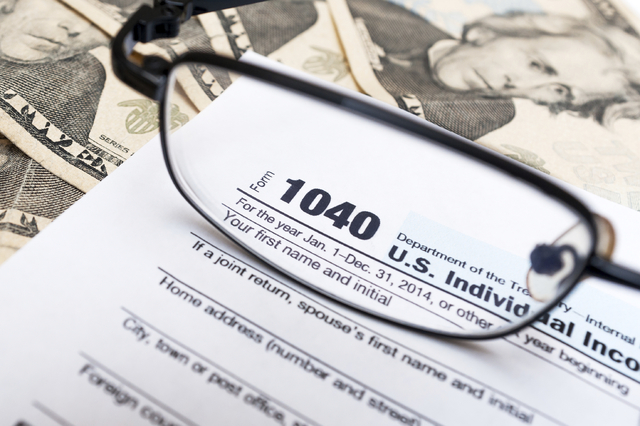How to legally ‘cheat’ your tax bracket
Lowering your tax bill is no easy feat: No matter how much you love Fluffy, your cat is not a dependent that can score you a deduction so you can reduce your taxable income. You can’t deduct the cost of a gym membership, even if the doctor told you to get in shape. However, there are a few ways to lower your taxable income and tax bracket to keep more money in your pocket this tax season.
Your tax rate is determined by the amount of income you earn. But if you can use deductions to chip away at that income until you’re in a lower tax bracket, you might be much richer come April. So save your receipts, hire a professional if you need tax advice or help, always check for updates to the tax code, and move your way down to the lowest possible tax bracket — without actually cheating, of course.
Tax Brackets: The Higher the Bracket, the More You Pay
There are five categories under which people can file tax returns:
- Individual taxpayers
- Married individuals filing joint returns and surviving spouses
- Married individuals filing separate returns
- Heads of household
- Trusts and estates
There are seven tax brackets in every category, except for trusts and estates, which contains five brackets. Each tax bracket contains a range of possible incomes. The first bracket is for those who earn the least — $9,225 or less for individual filers. They pay a flat rate of 10 percent of their income. For those in the other six brackets in each category, however, a base payment is required, plus a percentage on any earnings over the bracket’s minimum. For example:
- Individual taxpayers who earn $9,226-$37,450 will pay $922.50 + 15 percent of everything over $9,225.
- Individual taxpayers who earn $37,451-$90,750 will pay $5,156.25 + 25 percent of everything over $37,450.
- Individual taxpayers who earn $90,751-$189,300 will pay $18,481.25 + 28 percent of everything over $90,750.
Taxable Income: Less Is More
Both the base rate and the percentage paid on additional income increases with each successive tax bracket. As you can see, it pays to file taxes in the lowest possible bracket.
The key to “cheating” on your taxes is to reduce your taxable income as much as humanly possible. Also, don’t actually cheat on your taxes. The risks dramatically outweigh the potential rewards, and the likelihood of getting caught is high. Never attempt to conceal income — just use every tool at your disposal to make less of that income taxable. Check out five ways you can reduce your taxable income so you can determine what applies to your situation.
1. Tie the Knot
It’s probably not recommended that a person gets married just to save a few bucks in April. But if you’re considering taking the plunge, marriage makes tax time cheaper in almost every case. Married couples might do better filing jointly because joint filing comes at a lower tax rate than filing separately. “Those who are married and file separately will generally pay more tax than someone who is single,” said said Lance D. Christensen, CPA and Partner at Margolin, Winer & Evens.
“Even if a couple is looking toward divorce, if they qualify to file a joint tax return they may wish to file jointly as the overall tax will usually be lower,” Christensen said. “However, they should agree on how the overall tax will be dividend and paid.”
2. Put Money Into a Tax-Deferred 401k
When you contribute to your employer-based retirement plan, not only are you saving for life after your earning years, but you’re lowering your taxable income. Every dollar you contribute is a dollar less that will be taxed in April.
If your employer does not offer a retirement plan, or if you’re self-employed, an individual retirement account (IRA) can offer the same tax perks. You’ll pay taxes on this money when you retire, but you’ll avoid the burden now while you’re trying to save.
Roth IRAs are excellent retirement vehicles for some investors, but they are not tax-deferred. Try to get as close to the maximum contributions allowed by the government, which is currently $5,500 a year for an IRA if you’re under the age of 50 and $18,000 for a 401k in 2015.
3. Donate Money to Charity
Generally speaking, certain charitable donations and contributions can be written off as deductions to help lower your taxable income, and thus your tax bracket. However, this is not the case for labor or services such as volunteer work. On the IRS website, you can find a list of eight steps to deducting charitable contributions.
4. Look for a Job
By no means should you try to lose your job on purpose to avoid paying taxes. But if you’re unemployed and actively looking for a job, you’ve probably dropped to a lower tax bracket because your taxable income has decreased dramatically.
Still, there are ways you can get tax deductions during your job search. Many job-hunting expenses are tax deductible, as long as you’re looking for a job in your current line of work, as opposed to trying to switch careers or land your first job. You might be able to deduct travel expenses if you had to take a trip to look for a new job. Résumé costs and placement agency fees can be deducted, too.
5. Go to School
Students — or whoever pays their education-related expenses — are entitled to several tax deductions for higher education. You can reduce the amount of your taxable income by up to $4,000, according to the IRS. Related expenses can also be written off. For people in some tax brackets, interest paid on student loan debt can also be deducted.
From GoBankingRates.com: How to legally cheat your tax bracket
Related Stories:
-10 commonly missed tax deductions
-6 ways to deduct your job-search expenses





























